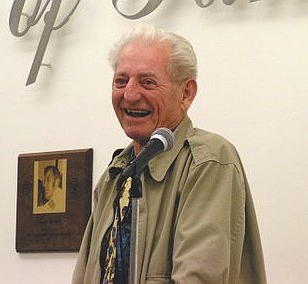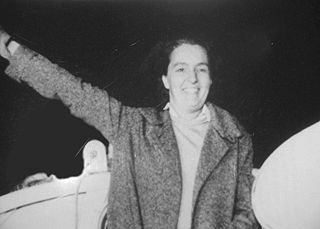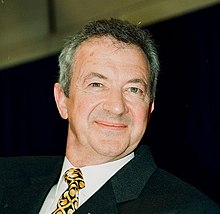
A hot air balloon is a lighter-than-air aircraft consisting of a bag, called an envelope, which contains heated air. Suspended beneath is a gondola or wicker basket, which carries passengers and a source of heat, in most cases an open flame caused by burning liquid propane. The heated air inside the envelope makes it buoyant, since it has a lower density than the colder air outside the envelope. As with all aircraft, hot air balloons cannot fly beyond the atmosphere. The envelope does not have to be sealed at the bottom, since the air inside the envelope is at about the same pressure as the surrounding air. In modern sport balloons the envelope is generally made from nylon fabric, and the inlet of the balloon is made from a fire-resistant material such as Nomex. Modern balloons have been made in many shapes, such as rocket ships and the shapes of various commercial products, though the traditional shape is used for most non-commercial and many commercial applications.

Auguste Antoine Piccard was a Swiss physicist, inventor and explorer known for his record-breaking hydrogen balloon flights, with which he studied the Earth's upper atmosphere and became the first person to enter the Stratosphere. Piccard was also known for his invention of the first bathyscaphe, FNRS-2, with which he made a number of unmanned dives in 1948 to explore the ocean's depths.

Jean Felix Piccard, also known as Jean Piccard, was a Swiss-born American chemist, engineer, professor and high-altitude balloonist. He invented clustered high-altitude balloons, and with his wife Jeannette, the plastic balloon. Piccard's inventions and co-inventions are used in balloon flight, aircraft and spacecraft.

Bertrand Piccard FRSGS is a Swiss explorer, psychiatrist and environmentalist. Along with Brian Jones, he was the first to complete a non-stop balloon flight around the globe, in a balloon named Breitling Orbiter 3. He was the initiator, chairman, and pilot, with André Borschberg, of Solar Impulse, the first successful round-the-world solar-powered flight. In 2012 Piccard was awarded a Champions of the Earth award by the UN Environment Programme. He is the founder and chairman of the Solar Impulse Foundation.

In aeronautics, a balloon is an unpowered aerostat, which remains aloft or floats due to its buoyancy. A balloon may be free, moving with the wind, or tethered to a fixed point. It is distinct from an airship, which is a powered aerostat that can propel itself through the air in a controlled manner.

Breitling SA is a Swiss luxury watchmaker founded in 1884 in Saint-Imier, Switzerland, by Léon Breitling. The company is known for its precision-made chronometers designed for aviators and is based in Grenchen, Switzerland.

Jacques Piccard was a Swiss oceanographer and engineer, known for having developed underwater submarines for studying ocean currents. In the Challenger Deep, he and Lieutenant Don Walsh of the United States Navy were the first people to explore the deepest known part of the world's ocean, and the deepest known location on the surface of Earth's crust, the Mariana Trench, located in the western North Pacific Ocean.

Benjamin L. "Ben" Abruzzo was an American balloonist and businessman who helped make Albuquerque, New Mexico, into an international ballooning center. He was part of the balloon crews that made the first Atlantic Ocean crossing by balloon in the Double Eagle II and the first Pacific Ocean crossing by balloon in the Double Eagle V.

Paul Edward Yost was the American inventor of the modern hot air balloon and is referred to as the "Father of the Modern Day Hot-Air Balloon." He worked for a high-altitude research division of General Mills in the early 1950s until he left to establish Raven Industries in 1956, along with several colleagues from General Mills.

Donald Louis Piccard was a Swiss-born American balloon pioneer, promoter, innovator, designer, builder, and pilot.

Hot air ballooning is the recreational and competitive adventure sport of flying hot air balloons. Attractive aspects of ballooning include the exceptional quiet, the lack of a feeling of movement, and the bird's-eye view. Since the balloon moves with the direction of the winds, the passengers feel absolutely no wind, except for brief periods during the flight when the balloon climbs or descends into air currents of different direction or speed. Hot air ballooning has been recognized by Fédération Aéronautique Internationale (FAI) as the safest air sport in aviation, and fatalities in hot air balloon accidents are rare, according to statistics from the National Transportation Safety Board (NTSB).

Breitling Orbiter was the name of three different Rozière balloons made by the Bristol based balloon manufacturer Cameron Balloons to circumnavigate the globe, named after the Swiss watchmakers Breitling. The third was successful in March 1999 of making the first nonstop flight around the world by balloon. It was piloted by Bertrand Piccard and Brian Jones.

Don Cameron MBE BSc MA MIEE D.Eng FRSGS is a Scottish balloonist, and later founder of Cameron Balloons, the world's largest hot air balloon manufacturer. Don Cameron is one of the few aeronauts to be awarded the Harmon Trophy, as the 'World's Outstanding Aviator' in 1999.

Jeannette Ridlon Piccard was an American high-altitude balloonist, and in later life an Episcopal priest. She held the women's altitude record for nearly three decades, and according to several contemporaneous accounts was regarded as the first woman in space.

Julian Nott was a British balloonist who later lived in Santa Barbara, California. He was known for his record-setting achievements. Nott set 79 world ballooning records and 96 British aviation records. He developed balloons for flights to Solar System destinations, particularly Titan. He flew a working prototype Titan balloon at minus 175 Celsius, approximately the temperature of Titan's atmosphere.

The history of ballooning, both with hot air and gas, spans many centuries. It includes many firsts, including the first human flight, first flight across the English Channel, first flight in North America, and first aircraft related disaster.

A Rozière balloon is a type of hybrid balloon that has separate chambers for a non-heated lifting gas as well as for a heated lifting gas. The design was created by Jean-François Pilâtre de Rozier (1754–1785).

Eleanor Vadala was an American chemist, materials engineer and balloonist. She became director of research and development at the Naval Air Development Center in Pennsylvania, where she helped to develop light synthetic materials for use in aircraft. One of her jobs was the testing of fabric in existing balloons to ensure they could be used safely.

The Balloon Federation of America (BFA) is a 501c3 non-profit group for the advancement of lighter-than-air aviation which includes hot air and gas balloons. Founded in 1960, located in Indianola, Iowa. The BFA partners with the National Balloon Museum to induct outstanding individuals into the United States Ballooning Hall of Fame. The Federation presents multiple awards including the Ed Yost Master Pilot Award and the National Crew Person Award. The BFA facilitates balloon events by providing advice and guidance on FAA compliance.
The Breitling Emergency is a luxury watch produced by Breitling SA. It contains a radio transmitter for civil aviation use, which broadcasts on the 121.5 MHz distress frequency and serves as a backup for ELT-type airborne beacons. For military users, the Emergency has a miniaturized transmitter operating on the 243.0 MHz military aviation emergency frequency. Under normal conditions—flat terrain or calm seas—the signal can be picked up at a range of up to 90 nautical miles (170 km) by search aircraft flying at 20,000 feet (6,100 m). Since February 2009, the Cospas-Sarsat Satellite System has not monitored the 121.5/243.0 MHz frequency; however, the signal transmitted by the Emergency was never strong enough to be picked up by satellite, and Breitling has announced that, as these frequencies will still be monitored by aviation, particularly during the localization phase of a rescue attempt, there are no plans to modify the signal's frequency.



















